Share the post "How to Juggle a Soccer Ball (Ultimate Guide)"
Juggling a soccer ball is difficult for beginner soccer players. Even some of the pro players can’t juggle. So there’s hope for us all.
Not Everyone Is Naturally Good at Juggling, and We Rarely Use It in A Game, Although It Can Help Us Control a Soccer Ball. There Is Something that Will Make Juggling a Soccer Ball Easier, and Here’s What We’ll Look At;
- Why juggling is hard
- Why juggling can be important
- Why you can’t juggle
- Steps to help you juggle easier
- Pro soccer players that can’t juggle
If you can only juggle the ball 10 times – that’s good enough (I’ve never seen anyone juggle more than 5 times in a game!). 10 times is my challenge to you. Let’s learn how we can make juggling easier.
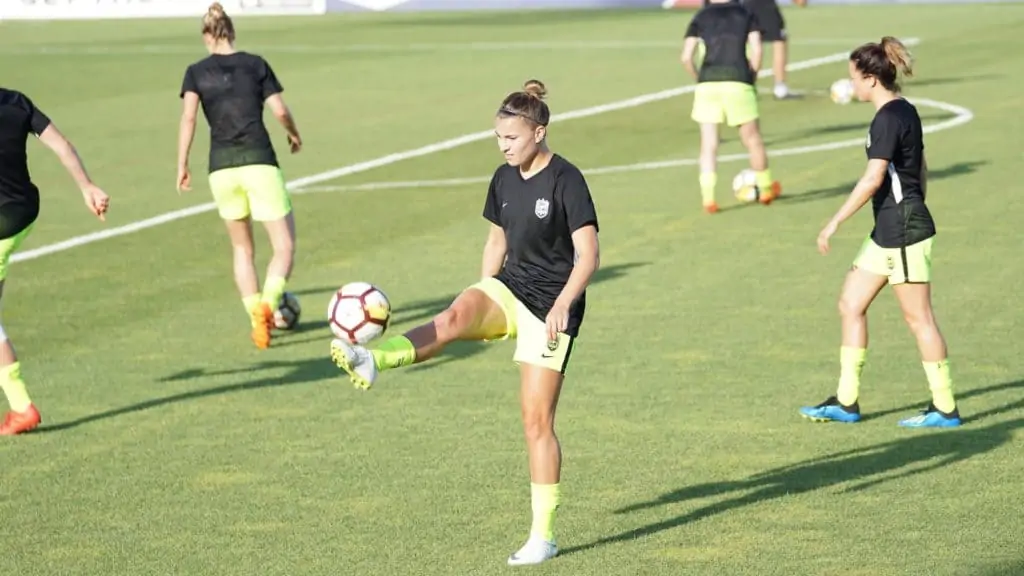
- Why Is Juggling so Hard?
- Juggling a Soccer Ball FAQ
- Why Is Juggling Important in Soccer?
- Why Can't I Juggle a Soccer Ball?
- Beginner Steps to Juggle A Soccer Ball
- Kick-Up and Catch Drill
- Professional Soccer Players Who Can't Juggle
- What Does Juggling a Soccer Ball Improve?
- Facts About Soccer Juggling
- How to Juggle a Soccer Ball Step by Step
- Why Should You Practice Juggling?
- Juggling a soccer ball tips;
- How to Juggle a Soccer Ball Step by Step
- How to Juggle a Soccer Ball Like a Pro
- 14. Maradona 7
- 15. Soccer Tennis
- 16. Juggle with a friend
- 17. Juggle Circles
- Juggling Soccer Ball Tips
Why Is Juggling so Hard?
Juggling a soccer ball is hard because of the muscles you need to develop in your foot, calves, and thigh. Once these muscles have developed, your balance will improve, and so will your juggling.
Juggling is unnatural movements and greater forces at play – gravity and balance. It ends up being harder than it looks. While it may be challenging to begin with, continued practice can translate into improvements on the field with ball control and awareness.
Even though it may be difficult, learning how to juggle can lead to developments in your play on the field, and you might even impress your friends with new tricks.
Juggling a Soccer Ball FAQ
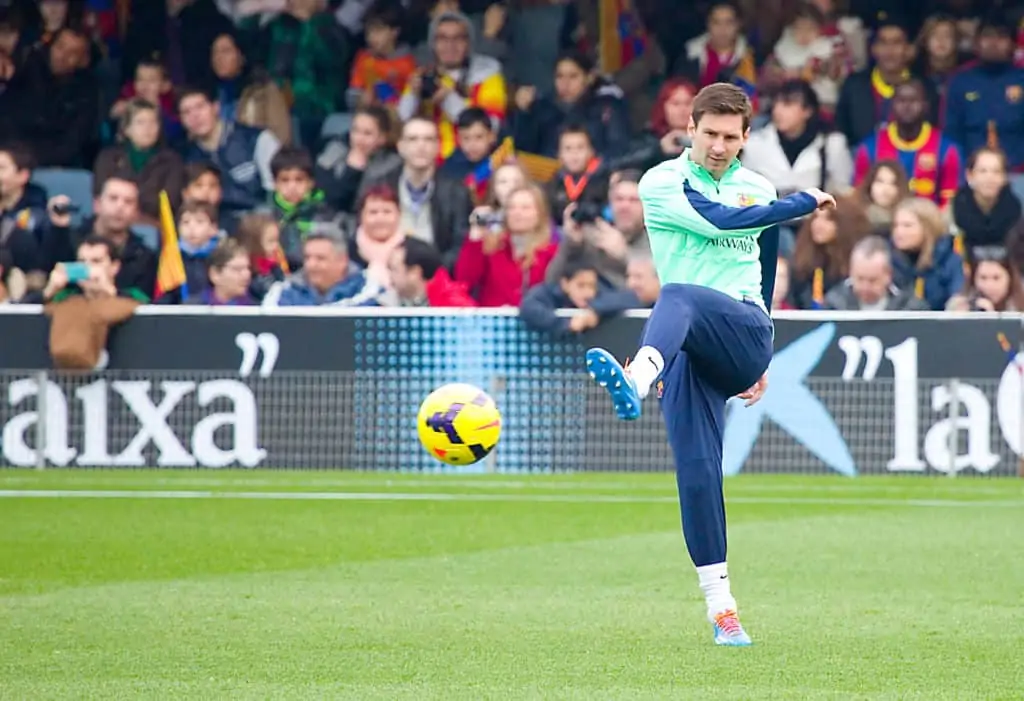
Why Is Juggling Important in Soccer?
While you may never have to juggle the ball with your head ten times in a row on the field to evade a defender, juggling helps improve your touch and concentration.
Like any skill, practice leads to improvement. In a sport like soccer, where it typically takes at least two people to complete essential competencies, juggling allows an individual to improve on their own.
Once you’ve got the basics of juggling, you’ll develop over the years. While it is important to be able to juggle a few times, passing, control, tackling, and shooting are more important.
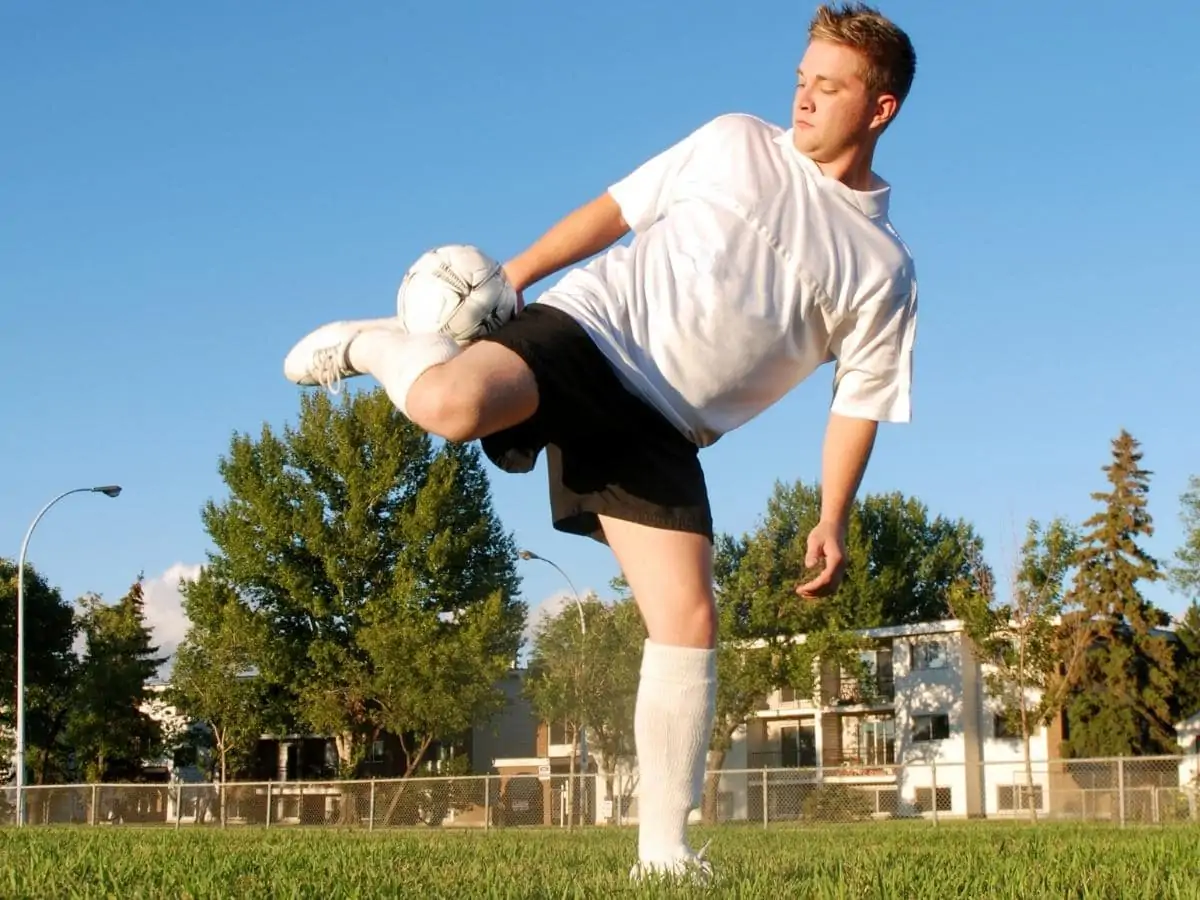
Why Can’t I Juggle a Soccer Ball?
You can’t juggle a soccer ball because of a lack of practice. Juggling takes many hours and years to get right. Practice each day for 10 minutes for a year, and you’ll be much better.
Some players will be able to pick it up easier than others – but not to worry. We all learn skills at different stages and different speeds.
Here are three things that might be stopping you from juggling a soccer ball;
1. Position
Stand on the ground that is even so that you have a steady base to work from. Make sure you have enough room to move around with the ball.
Keep your head facing down a little towards your feet so that your back is slightly curved. You need to position your body also into a focus on the foot.
Juggling is easier when practiced on a hard court or artificial turf so you can move easily.
2. Balance
Put your hands to the front and open out – like you are going to hug someone. Once you start to juggle, move your arms a little to go with the flow to control your back muscles.
Stand with your feet slightly apart in a starting position. The positions and movements need some muscles that have not been fully used before, so it takes time to build them up.
- A good exercise for juggling is standing on one leg and also hopping.
When we drop the ball, we sway, our changed focus of concentration from our body placement to the ball’s movement. This is only natural.
3. Muscles
Standing on one leg and kicking are not done in any other activity. This means your muscles need to develop. When we first start then, we kick the ball up and move around after it like it’s a hot potato!
Juggle the ball using basic steps to build your strength in those areas. Follow these steps to help you improve;
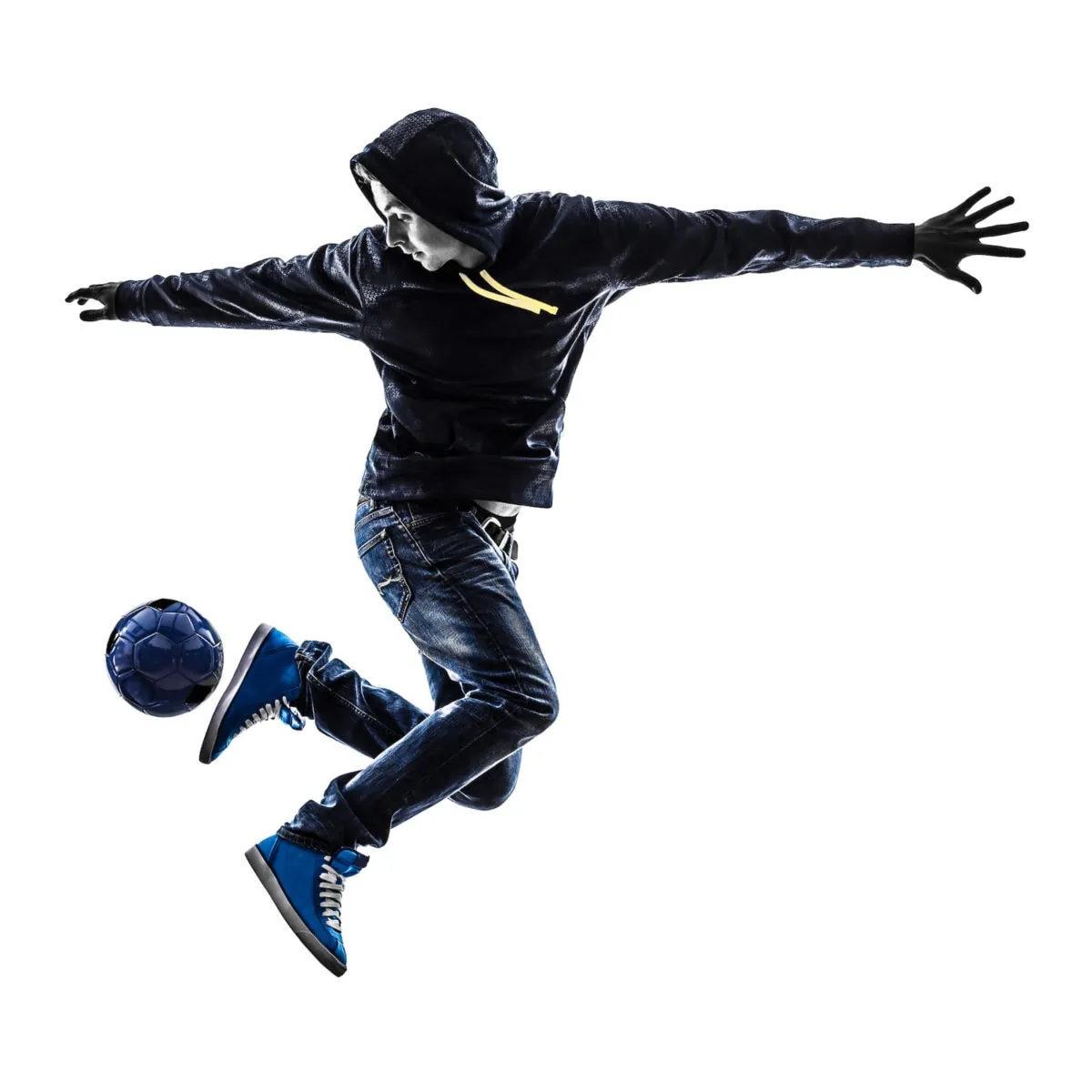
Beginner Steps to Juggle A Soccer Ball
- Drop the ball from in front of your chest so that it only lightly drops onto your foot.
- Curl your foot to ‘catch’ the ball on the laces.
- Just before the ball is about to hit your foot, move your foot up to sightly kick it.
- Start with your best foot – you can use one foot until you get good with that one.
- Kick the ball up but not higher than your head to have some control.
Kick-Up and Catch Drill
If you are struggling to do more than 2 or 3 kick-ups, then try this;
- Follow the steps above for your positioning.
- Drop the ball down to your foot.
- kick the ball back up towards your hands.
- Catch the ball.
- Repeat until you can easily do this.
Getting the aim of your kick with the right power and accuracy will help you advance easier. Your balance will also develop, and the muscles required will build.
Professional Soccer Players Who Can’t Juggle
Some of the world’s most expensive soccer players can’t juggle a ball! You’ll be amazed at how much they cost and how much they get paid.
Although they can’t juggle, fortunately, their other skills make up for this lack of one. So don’t pack up your kit and think your dreams are over as making as a pro soccer player.
Here are the pro soccer players that can’t juggle a soccer ball very well;
1. Danilo (Real Madrid C.F.)
The Brazilian defender, who has achieved success with Real Madrid, Manchester City, and Juventus managed to produce a poor result at his unveiling.
2. Ousmane Dembélé (FC Barcelona)
The young French footballer made the big move from Borussia Dortmund to FC Barcelona, but the juggling display left much to be desired.
3. Paulinho (FC Barcelona)
The Brazilian made the surprising move from Guangzhou Evergrande to FC Barcelona when used to players making a move the other way. He didn’t endear himself to the supporters and left FC Barcelona soon after his arrival.
4. Theo Hernandez (Real Madrid C.F.)
The French defender didn’t invoke confidence with his juggling ability at his unveiling, but he is a defender, so maybe we can give him a pass. (Twitter)
5. Ferland Mendy (Real Madrid C.F.)
The French defender may not have impressed anyone with his juggling ability but has become an ever-present name on the team sheet.
What Does Juggling a Soccer Ball Improve?
Juggling can enhance the connection between your body and the ball. As a result, your touch improves, improving ball control. Try juggling for a week and get into a game.
- Control
- Touch
- Agility
- Awareness
- Composure
- Using both feet
Your feet will be able to bring down the ball with an ability that you didn’t even know that you had.
Facts About Soccer Juggling
Brought to you from the beautiful annals of Guinness World Records:
- John Farworth (UK) set the record for the farthest distance covered juggling a soccer ball in one hour with a record of 5.82 km (3.61 mi). To top it off, he did it in the Sahara Desert. (Guinness)
- Arash Ahmadi Tifakani (Iran) set the record for the longest distance juggling a soccer ball at 21.2 km (13.17 mi).
- Abraham Muñoz (Mexico) set the record for the fastest mile juggling a soccer ball at 8 min 17.28 seconds.
- The record for most people keeping a soccer ball in the air for at least 10 seconds was 1377 people in the Linzi District in Shandong Province, China.
- The record for most consecutive soccer headers set by a pair is 1,013 by Dimos and Renos Christodoulidis (Cyprus). (Guinness Record)
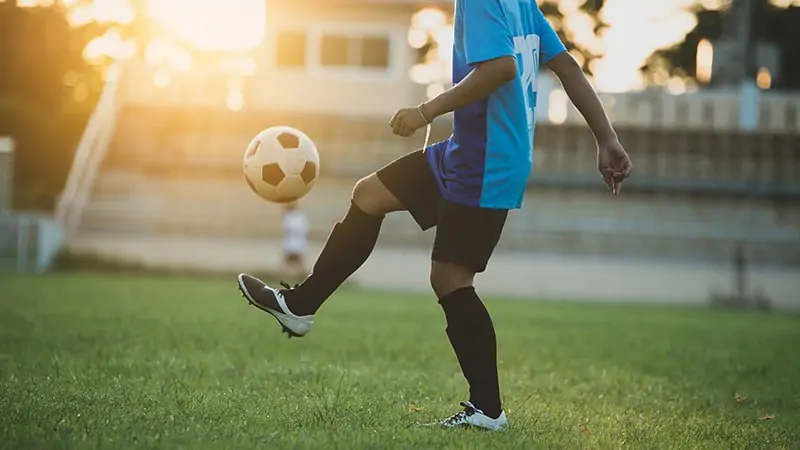
How to Juggle a Soccer Ball Step by Step
Here’s a basic overview of how to juggle a soccer ball for beginners. We will go into each step a little later to walk you through each section.
- Body Position
- Body Shape
- Kicking Technique
- Practice
- Use Backspin
- Alternate Feet
- Use Different Body Parts
- Knee/Thigh
- Heading
- Shoulders
- Heel
- Chest
- Establish a Rhythm
Advance onto the pro tips later if you have mastered the basics.
- 13. Maradona 7
- 14. Soccer Tennis
- 15. Juggle with a friend
- 16. Juggle Circles
- 17. Juggling Tips
Why Should You Practice Juggling?
Juggling is a fantastic way to enhance fundamentals on your own, with minimal equipment and space needed. In team sessions, a coach will rarely instruct players or teach players to juggle the ball.
However, if you want to excel at the sport, you should try adding extra sessions to your weekly schedule dedicated to personal skill development. Juggling exercises are the perfect way to squeeze in a 10-minute skill workout if you are busy, or they can be incorporated into a larger workout.
We’ve all seen our soccer heroes juggling the ball, often using a personal flair to spice things up. This can give off the impression that juggling is a very difficult skill. The good news is, that in its basic form juggling is quite straightforward.
So how do you juggle a soccer ball? Essentially, it is the act of keeping the ball in the air, without letting the ball touch the floor/ground. You can use various body parts to do so but shouldn’t “handball” or break the game’s core rules.
Juggling a soccer ball tips;
- Body Position: knees slightly bent, head leaning over the body, feet shoulder with apart. The player should be light on their feet, or on their toes to enable quick movement.
- Start by dropping the ball from your hands toward your feet.
- Kick the ball upward (ideally about chest height).
- Wait for the ball to drop toward your feet and repeat the above step.
- Use backspin to keep the ball close to your body.
- Alternate what foot you’re kicking with.
- Use different parts of the body to control the ball.
- Establish a rhythm.
We will now look at these basic steps in a little more detail. As you progress with your ability to juggle the ball, you should begin to use different parts of your feet, and different body parts.
Attempt to juggle in set patterns (we will look at some of these also). As with all individual-based drills, setting goals and targets is important.
Use a target net to mix up your juggling practice to make it more game-like. This rebound net is ideal to pass the ball and take it back using your control. It will excel your game, check it out at Amazon here.
How to Juggle a Soccer Ball Step by Step
1. Body Position
- Stand on a flat surface
- Stay on your toes or be light on your feet – whichever you are more comfortable with.
- Slightly bend your knees for balance and optimal movement.
- During the exercise, your head should be pointed slightly downward, keeping your eyes on the ball at all times.
- Particularly for beginners, the accuracy of juggling may be poor, and you may spend some time moving around trying to keep the ball under control. The most important factor here is to be loose, agile, and mobile enough to do so.
2. Body Shape
- Start by dropping the ball from your hands toward your kicking foot.
- With your body positioned as described above and staying light on your feet, you are ready to kick the ball and start to juggle.
- If you are a more advanced player, try starting with the ball on the ground. You can use a variety of “flick-ups” to get the ball in the air – then begin to juggle.
3. Kicking Technique
- Kick the ball upward to about chest height. Ensure that each kick is light and controlled. This prevents wasted movement and helps establish control over the ball and set a rhythm/tempo.
- The ball should come off the top of your foot, often referred to as “the laces”.
- When striking the ball, lock your ankle and point your toe upward. This gives you the best chance to strike a controlled, accurate kick. It is also the best way to get a backspin on the ball.
3. Practice
- To begin with, you can practice single juggles. This helps you to get the right power, accuracy, and technique for a juggle.
- Once you are comfortable with this, the aim should be to continue juggling the ball multiple times in a row without using your hands.
- Instead of catching the ball after you kick, wait for the ball to fall back down naturally and repeat the kicking technique outlined above.
4. Use Backspin
The correct amount of backspin will help keep the ball close to your body, making consecutive juggles much easier.
- Lock your ankle, point your toes upward, and kick the ball with the top of your foot in a forward scooping motion. This will cause the ball to travel upward with some backspin.
- Be careful not to overdo the backspin, causing you to lose control of the ball or kick it against your own body.
5. Alternate Feet
It’s important to use both feet when juggling. A strong player on their “weaker” foot always has an advantage.
At first, it may be difficult to incorporate your weaker foot, but once you begin to improve, having an extra appendage makes juggling easier. It allows you to make up for a misplaced kick or regain control whilst staying balanced.
- To begin with, take your first juggle on your dominant foot but the second with your weaker foot. Initially, all you need to do is perform one juggle with your weaker foot.
- Once you make controlled juggles with your weaker foot, try alternating juggles from your stronger to your weaker foot.
- Patience is key here, as is technique.
- Once comfortable using both feet, you can freestyle your juggling order, switching from right to left as you please.
6. Use Different Body Parts
Using different parts of the body to juggle has many benefits:
- In a game, a ball can come at you from any angle or height so it’s important to be able to use different body parts to control the ball.
- While juggling, getting the ball to different areas of your body takes a lot of skill and control. Therefore, this helps improve a player’s control over power, accuracy, and first touch.
- Overall coordination is enhanced.
- A player’s balance is crucial when juggling, particularly when using different body parts. Practice can only improve a player’s core and balance.
Here are some of the body parts you should be involved in your juggling routine:
8. Knee/Thigh
- Make contact with the ball when your upper leg is perpendicular to your hip.
- Connect with the ball just above your knee, on your thigh.
- Avoid making contact with the angular part of the knee. It is almost impossible to control the ball with this part of the leg.
9. Heading
- Relax your neck until the point of contact.
- Keep your eyes on the ball.
- Connect with the ball using your forehead.
- Slightly bend the knees, use your arms to generate momentum, and posture the upper body.
To practice, try to perform consecutive light upward headers.
10. Shoulders
Using the shoulder to strike a soccer ball is not the most practical skill to have but occasionally, it may have its uses. Using shoulders while juggling definitely has benefits regarding your judgment of the flight of a ball and your balance.
As the shoulders are not flat and have a relatively small surface area, it is difficult to control a shoulder strike.
- As the ball approaches your shoulder, tilt your head to the side, watch the ball as it comes down, and gently shrug it upward to initiate contact with it.
- The top of the shoulder, where it is most even, is the best area to make contact with.
- Ensure that you do not make contact with the ball using your arm.
- It’s not important to do consecutive shoulder juggles, so concentrate on bringing the ball back under control after executing one.
11. Heel
Using your heel in soccer is often a high risk, high reward. In some cases, it can get you out of a tricky situation or demonstrate a beautiful piece of skill.
However, when it goes wrong, it comes across as being wasteful. Using a backheel in a juggling routine improves spatial awareness and is a great practice for in-game, first-time backheels.
- Position yourself so that the ball is dropping behind your legs.
- Bring your heel up gently, creating a 90-degree angle between your leg’s upper and lower parts.
- Make contact with the ball using the back of your heel. This is a hard surface, so there is no need to generate too much force.
- Ensure that you connect with the center of the ball for accuracy. The heel is a small area of the foot, so it can be hard to have a lot of control using it.
- Aim relatively high with your heel kicks, giving yourself time to adjust your body position to control the ball again.
- It is not important to do consecutive heel kicks while juggling.
12. Chest
After an inaccurate touch, the chest should be used for overall control or to cushion the ball back into your juggling routine. Learn back to let the ball hit your chest so that you cushion the ball.
This brings the ball back under control, and it will drop nicely towards your feet. You may take a step back to give yourself a little distance between the ball.
You can also chest the ball forward by pulling back your shoulders and pushing your chest forward, propelling the ball in front of you. Time it so that you push forward just as the ball is coming to you for greater control and power.
13. Establish a Rhythm
Once you are versed in each of these steps and comfortable juggling the ball using various techniques, the key to mastering the art of juggling is to establish a rhythm. In this instance, what I mean by rhythm is a measured, emphasized pattern with particular touches or movements.
How to Juggle a Soccer Ball Like a Pro
I have outlined some nice juggling combos and fun drills below, so check out some of these useful patterns to practice. If you can complete these steps, then you are a juggling pro!
All of the pros play juggling volleyball using a net and it’s great fun. It is one of the best ways to improve your touch – see this cool portable net at Amazon here.
14. Maradona 7
The Maradona 7 is a juggling pattern named after the famous Argentinian Diego Maradona. It involves 7 touches of the ball.
- 2 x consecutive juggles with the feet (1 with the left, 1 with the right), followed by:
- 2 x consecutive juggles with the knees/thighs (1 with the left, 1 with the right), followed by:
- 2 x consecutive juggles with the shoulders (1 with the left, 1 with the right), followed by:
- 1 x header.
Here is a demonstration of the Maradona 7. It’s more difficult than it looks, especially using the shoulders.
15. Soccer Tennis
The concept of this game (as you would assume) is the same as tennis:
- Set up a net at a height that you’re comfortable with.
- Create 2 square/rectangular sections on either side of the net. These are the zones of play, with one section allocated per player.
- Begin the game by serving – kicking or heading the ball into your opponent’s zone.
- The opposing player must return kick, head, knee, shoulder or chest the ball back over the net.
- The ball may only bounce once inside the zone.
To make things more difficult, you can add some more rules. For example:
- You may only take a certain amount of touches.
- Volleys (before the ball bounces) are not allowed.
- Adjust the size of each zone.
- Adjust the height of the net.
Or, try playing doubles. This is a great game to improve your skillset and it’s a lot of fun.
16. Juggle with a friend
Again, this is straightforward but very beneficial. Stand across from a partner and take turns juggling the ball, passing the ball back and forth.
This drill aims not to let the ball touch the ground.
Some extensions to this drill are:
- Set targets for how long you can keep the ball in the air.
- Isolate certain body parts and practice using only these to juggle. For example, juggle the ball using only your head or feet.
- Set a limit to the number of touches each player can take.
17. Juggle Circles
This is the same concept as above but is intended for larger groups. The players should form a circle and try to juggle the ball amongst each other without letting the ball hit the floor. To spice things up, try adding multiple balls.
Here’s a unique perspective of a Bayer Leverkusen juggling circle.
Juggling Soccer Ball Tips
As a rule of thumb, it’s always important to set targets to achieve meaningful progress. When juggling, start basic, slow, and easy.
Work your way from single juggles, to multiple, to using different body parts, to practicing the more advanced juggling drills mentioned above. Take light touches, always be in control, and don’t kick the ball too high (unless you are doing so intentionally to make things more difficult).
Try not to rely too much on your dominant foot, and persist in practicing using different parts of the body.
For the days when you don’t have time for a full practice session, dedicate 5 or 10 minutes to juggling. Every minute adds up, and you will see benefits to your game.
Share the post "How to Juggle a Soccer Ball (Ultimate Guide)"
Joel is a seasoned soccer journalist and analyst with many years of experience in the field. Joel specializes in game analysis, player profiles, transfer news, and has a keen eye for the tactical nuances of the game. He played at various levels in the game and coached teams - he is happy to share his insight with you.



